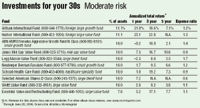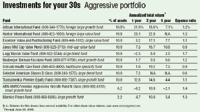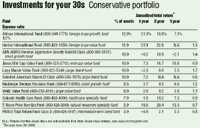Article
Expert investing, decade by decade
We give you the best investment strategies - and specific suggestions - for doctors in their 30s, 40s, 50s, and beyond.

But getting your financial house in order needn't be mystifying-or difficult. No matter what your financial goals or your level of income, there are common benchmarks that tell you how much to save and what to invest in at different ages. We went to the experts for their specific recommendations.
Your 30s: just starting out


How much should you put away during your 30s? By the end of the decade, your goal should be to amass about $250,000, according to CPA and financial planner Giles K. Almond of Matrix Wealth Advisors in Charlotte, NC. (This and other calculations in this article are ballpark figures calculated for a hypothetical doctor. Among the assumptions Almond made about this doctor: an annual salary of $150,000, a nonworking spouse and two children, maximum contributions to a 401(k), and an 8 percent investment return. Your own savings goal will likely be different, but this gives you a rough idea.)






